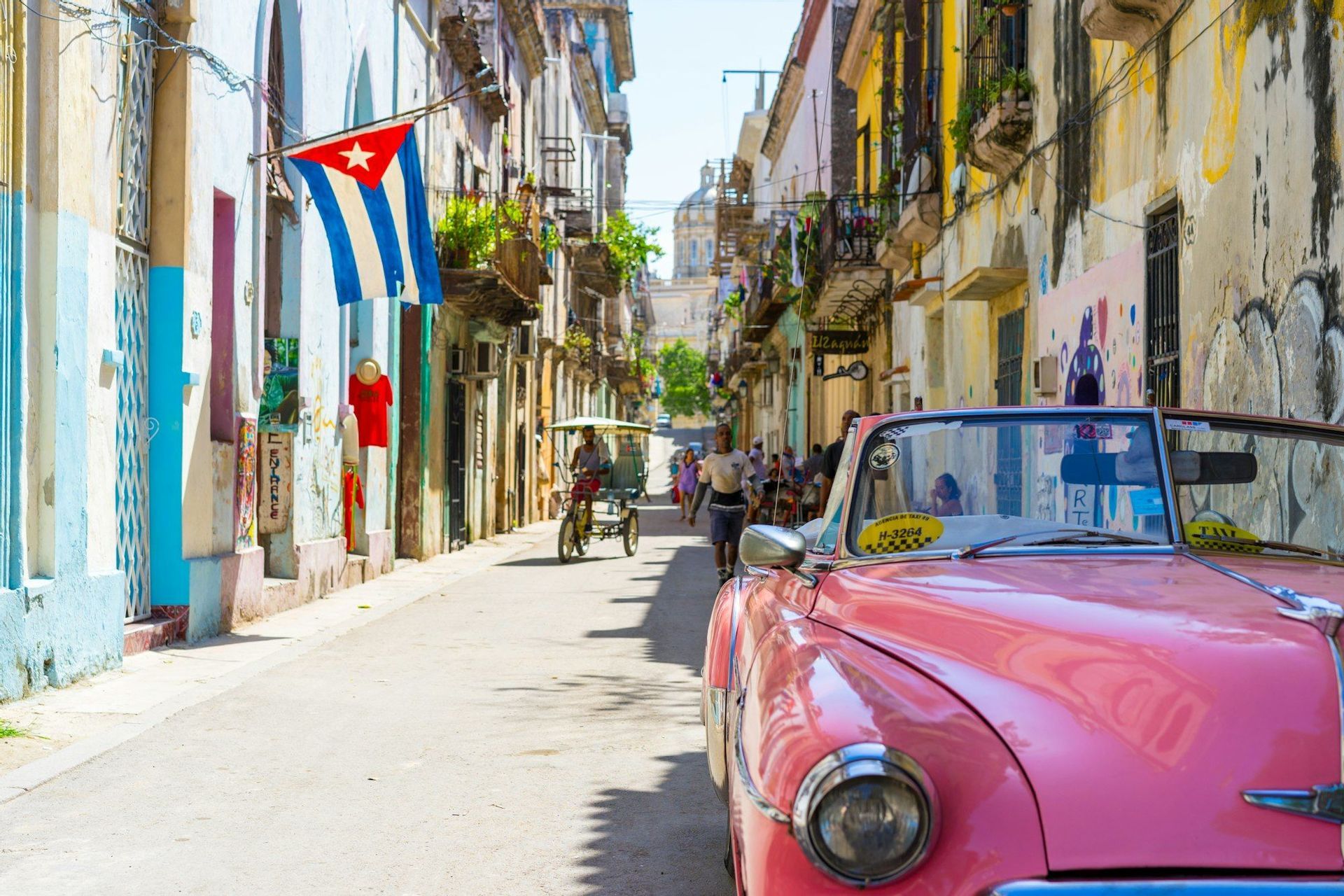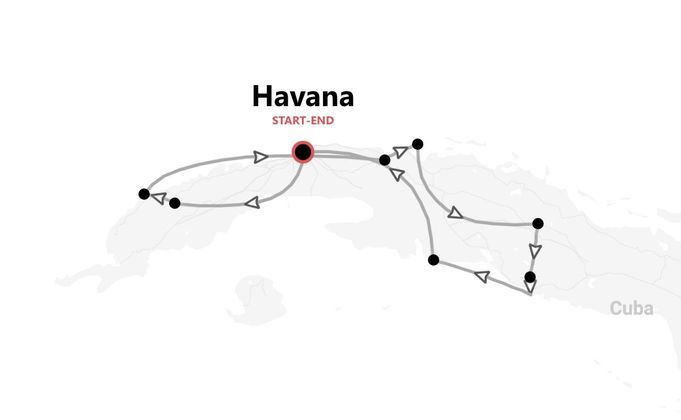
Group trips to Cuba
Our organized trips to Cuba
Imagine an island where every street corner hums with an irresistible rhythm, inviting you to discover a spirit as vibrant as its colors. Cuba is a land of unparalleled cultural energy and breathtaking natural beauty, where the past dances harmoniously with the present. From the cobblestone streets and architectural grandeur of Habana Vieja, a UNESCO World Heritage site, to the colonial charm of Trinidad and the dramatic limestone mogotes of the Viñales Valley, the island offers a mosaic of unforgettable experiences. Cuba welcomes curious explorers and seekers of authentic joy, ready to immerse themselves in its warm embrace and discover its myriad wonders.
FAQs about Cuba
If you are a UK citizen, to find out the entry requirements for Cuba, you can check this informational page from our partner Sherpa. If you need a visa, you can apply for it through Sherpa. If you are not a UK citizen, you can still use Sherpa by changing the nationality in the 'Passport' section.
Before traveling, always remember to check the government website of your country of origin for updates on the entry requirements for Cuba – you wouldn’t want to stay home due to a bureaucratic detail!
- UK residents: review the FCDO Travel Advice.
- US residents: consult the US Department of State Travel Advice.
- Other residents: refer to your government or local consulate's travel advice.
Cuba operates on Cuba Standard Time (CST). Keep in mind that Cuba observes daylight saving time, usually from March to November, when the clocks go forward by one hour. Always double-check the current time difference when planning your trip.
The currency in Cuba is the Cuban Peso (CUP). You can exchange your money at official exchange offices, banks, or hotels. It's a good idea to bring euros or Canadian Dollars for better exchange rates, as US Dollars might incur a hefty fee.
Cash is the most common payment method in Cuba. Credit cards are not widely accepted, so it's best to bring Euros or Canadian Dollars to exchange into Cuban Pesos at local banks or official exchange offices (CADECA). It's always a good idea to carry small denominations for everyday transactions.
Yes, tipping is common in Cuba and generally appreciated as a gesture of gratitude. In restaurants, a tip of around 10 percent of the bill is customary. For hotel staff like bellboys or housekeeping, a small tip in cash is also appreciated. When taking taxis, rounding up the fare or adding a little extra is a nice gesture. It's a good idea to tip in the local currency, the Cuban Peso, which you can exchange at official currency exchange offices or banks.
Internet access is limited and slow in Cuba. Buy a local SIM or consider an eSIM if supported. Public hotspots exist, mainly in tourist areas, but don’t count on fast speeds.
In Cuba, the official language is Spanish. Here are some useful colloquial expressions you might hear or use during your travels:
- Hello: Hola
- Thank you: Gracias
- Please: Por favor
- How much does it cost?: ¿Cuánto cuesta?
- Where is the bathroom?: ¿Dónde está el baño?
- How are you?: ¿Cómo estás?
These phrases can help you communicate a bit more easily with locals.
In Cuba, you'll typically find two types of plugs: Type A and Type B. Type A has two flat parallel pins, while Type B has the same two pins plus a grounding pin. The standard voltage is 110V, and the frequency is 60Hz, so it's similar to what's used in the United States. It's a good idea to bring a universal adapter to cover all your bases, especially if your devices are from Europe, where the voltage and plug types are different.
Cuba's main religion is Roman Catholicism, but you will also find a mix of other beliefs such as Santería, which blends African traditions with Catholic elements. While many Cubans identify as Catholic, religious practices can vary widely. Important religious holidays include Christmas and Easter, when many locals attend church services and family gatherings. You might also experience festivals related to Santería, which often involve vibrant music and dance.
When packing for Cuba, you'll want to consider the country's warm climate and vibrant culture. Here's a helpful list to get you started on what to put in your backpack:
-
Clothing:
- Light, breathable shirts
- Shorts
- Swimsuit
- Lightweight jacket or sweater for cooler evenings
-
Shoes:
- Comfortable walking sandals
- Flip-flops for the beach
- Casual shoes for evenings
-
Accessories and Technology:
- Sunglasses
- Hat for sun protection
- Camera or smartphone for photos
- Portable charger
- Travel adapter (Cuba uses Type A and B plugs, 110V)
-
Toiletries and Medication:
- Sunscreen
- Bug spray
- Basic toiletries (toothbrush, toothpaste, etc.)
- Hand sanitizer
- Common travel medication (pain relievers, antihistamines, motion sickness pills)
Packing light and practical will help you enjoy everything Cuba has to offer.
Cuba's weather is generally warm and tropical, but it can vary depending on the region and time of year. Here’s a quick rundown:
- Havana and Western Cuba: Warm and humid with temperatures ranging from 24°C to 31°C (75°F to 88°F). Best to visit from November to April when it's drier and cooler.
- Central Cuba: Similar to the west, with slightly more humidity. The rainy season is May to October.
- Eastern Cuba: Hotter and drier, especially in summer. Temperatures can go up to 33°C (91°F).
The hurricane season runs from June to November, so plan accordingly.

